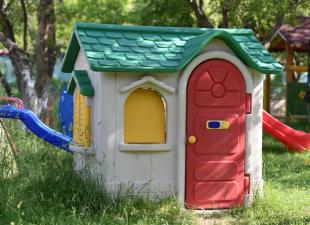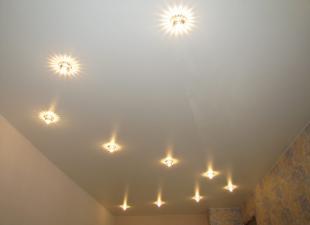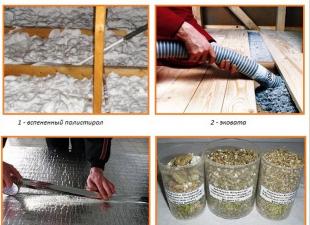Clay is an irreplaceable material in the preparation of masonry mortar. It owes its demand to unique properties, which consist in the magical transformation of clay into stone after being treated with fire. During the firing process, it acquires the strength inherent in brick, gives excellent adhesion to the structure and withstands the highest temperatures. However, in order to achieve its maximum qualities, it is necessary to prepare a mortar for laying the oven with an optimal ratio of ingredients.
Determining the quality of the clay
The main indicator is fat content. Distinguish between oily and skinny clay. The first, when dried, significantly decreases in volume and cracks, and the second crumbles.
Immediately, we note that there is no strictly defined ratio of sand and clay to obtain a good solution. The proportions are determined experimentally, by selection depending on the fat content of the breed.
You can determine the fat content of clay rock in the following way. Roll up the rope of clay, assuming a thickness of 10-15 mm and a length of 15-20 cm. Wrap them in a wooden form with a diameter of 50 mm. If the clay is oily, then the tourniquet is stretched gradually, without cracking. Normal provides a smooth stretch of the rope and breaks, reaching a thickness of 15–20% of the original diameter.
Purification from impurities
The kiln solution requires clean sand. To separate it from impurities, it must first be sieved and then washed. For sifting, a fine-mesh sieve with a mesh size of 1.5 mm is used. Next, the sand is washed like this: a sacking with a sagging is pulled onto the holder (a kind of net should be obtained), into which the sand mixture is placed. The structure is fixed on a stand, sand is poured and rinsed using a hose and a jet of water. The process continues until the water flowing down from the sand becomes clear.

To remove impurities from the clay, it is washed. Crushed, placed in the upper part of an elongated container (for example, an old trough or bath). Place the container at an inclination of 4–8 °. Water is poured into the lower part so that it is at the top and does not touch the clay. Clay is washed with a small spatula or iron scoop. Gradually, it softens and a homogeneous pasty substance forms at the bottom, which is carefully transferred to another container. The process continues until the required amount of solution is obtained.

If you bought a packaged dry clay, you need to soak it. The process of saturating clay with water is quite simple. For work, a wide and deep container is taken, dry clay is poured to a level of 10–20 cm, leveled and water is added. The amount of water - so that everything is completely covered. After a day, it is thoroughly mixed with a shovel, if necessary, liquid is added and again left for the same period. When everything turns into a paste, we can assume that the clay is ready. This is repeated several times until all the required amount is soaked.
Preparation of oven solutions: types, applications, recipes
When performing furnace work, different solutions are prepared and for different purposes:
- installation of the foundation;
- oven masonry;
- plastering and facing work.
For these purposes, solutions are used:
- clay;
- lime-clay;
- sand-cement;
- lime.
The ovens are placed on clay mortar , adding a little salt or cement for strength. Many people use only clay with water, no additives. To facilitate the mixing of the solution, some stove-makers make wooden flooring from boards with low sides. The wide working area of mixing allows for better preparation of the solution.

First you need to determine how much material you need. The calculation is as follows: when laying 50 pieces of bricks flat with a seam thickness of 3-5 mm, about 20 liters of masonry mixture will be required (increase by 15-20% if we are building a Russian stove).
Clay mortar is used for the main structure of the kiln, it can also be used for cladding. Consists of clay, water. Aggregate is sometimes added: sawdust, shavings, construction sand. The clay mixture is prepared in this proportion : for 2 parts of clay, 1 part of filler is added. More often than others, clay-sand mortar is used for laying the furnace.
The components are mixed into a homogeneous mass until a creamy state. The masonry mass should come off the shovel well and leave no marks. Also, separable water should not appear on the surface - if this happens, you need to add sand. To give greater strength, salt is added to the solution: 100–250 grams per bucket of solution. Less commonly, cement is used - 750 grams per bucket.
How to prepare a mortar for laying stoves is demonstrated in the video material. At the same time, you will see the consistency to which you need to soak the clay.
Sand-cement mortar is used to level the surface irregularities and lining the furnace (tile, mosaic, stone). Cement mortar for the kiln is used for sealing joints, when laying the foundation. It is prepared as follows: the required amount of building sand and cement is measured, mixed well, poured with water to the desired consistency - such a state when it is sufficiently mobile and squeezed out of the seam without much pressure. The proportions of materials depend on the brand of cement composition, most often 1: 2.
Lime is used as a mortar for plastering ovens, for laying foundations and pipes. Cooking it is fundamentally different. First, lime is slaked and kept in a special pit for about a week. After that, a solution is prepared with sand. The C ratio depends on the fat content of the lime (usually 1: 2 or 1: 3).
Even for plastering the furnace, lime-clay mortars are used with the addition of asbestos to give greater strength. The proportions of the solutions are as follows:
- clay-lime dough-sand-asbestos 1: 1: 2: 0.1;
- clay-sand-cement-asbestos in the same ratio;
- gypsum-sand-lime dough-asbestos 1: 1: 2: 0.2.
The cooking technology consists in combining all dry components and adding clay, gypsum or milk of lime diluted with water. Then the components are mixed until smooth.
There is a refractory (chamotte) mortar for laying the core of furnaces. For its preparation, chamotte and refractory clay are mixed in a 1: 1 ratio, then water (one fourth of the clay mass) is added and mixed well.

This is what a good solution looks like on fireclay brick
It is necessary to monitor the quality of the solution. After all, only a sufficiently plastic composition is able to ensure good adhesion of the oven masonry and the tightness of the seams.
Determination of the proportion of the solution
The plasticity and fat content of the masonry mortar are regulated by the addition of sand. You can determine the proportions as follows:

Having determined experimentally the necessary proportion of the ratio of sand and clay in the future solution, we proceed to the preparation of the basic materials.
 parlini.ru Repair of an apartment, a summer residence and a house.
parlini.ru Repair of an apartment, a summer residence and a house.


